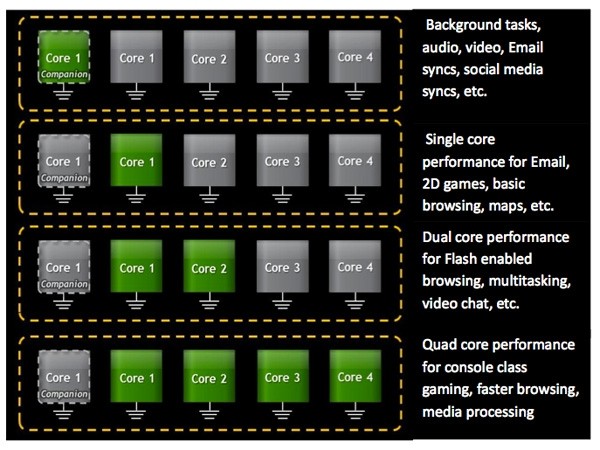We've been hearing about Kal-El and its capabilities for quite a while. Nvidia originally expected the first tablets carrying the quad-core chip to arrive in August but now that date has been pushed to sometime in Q4. Although there's still no firm date for a release, besides a rumored October debut inside the Asus Eee Transformer 2, today the company has revealed some interesting new details about Tegra 2's much-anticipated successor.
As it turns out Kal-El will include a surprise fifth core, or companion core, built using a "special low power silicone process" which works on tasks at a low frequency. Nvidia calls this approach "variable symmetric multiprocessing" and it basically allows it to use this extra core for handling low overhead tasks such as syncing email and keeping apps alive when the device is in active standby mode or running tasks that don't require a lot of power.

Each of these cores is an ARM Cortex A9 CPU that's individually enabled and disabled based on workload, but all five can't run at once. The low-power companion core runs at a lower voltage than the rest and is used only while the performance state requested by the OS/apps isn't higher than a predetermined threshold. Once that threshold is crossed the low-power core is switched off while the high-performance A9 cores take over, enabling 1 to 4 cores as needed.
The result is a quad core processor that consumes less power and provides higher performance than Tegra 2.
Nvidia isn't talking about final clocks for Kal-El or dynamic frequency ranges besides mentioning that the companion core's max operating frequency is capped at 500MHz. They're also not saying a lot about GPU performance, but according to their own internal benchmarks we can expect gains in the 2 - 3x range over Tegra 2.
You can read more about Nvidia's upcoming Kal-El chip over at the company's blog or check Nvidia's collection of whitepapers, including two that detail its variable SMP architecture.